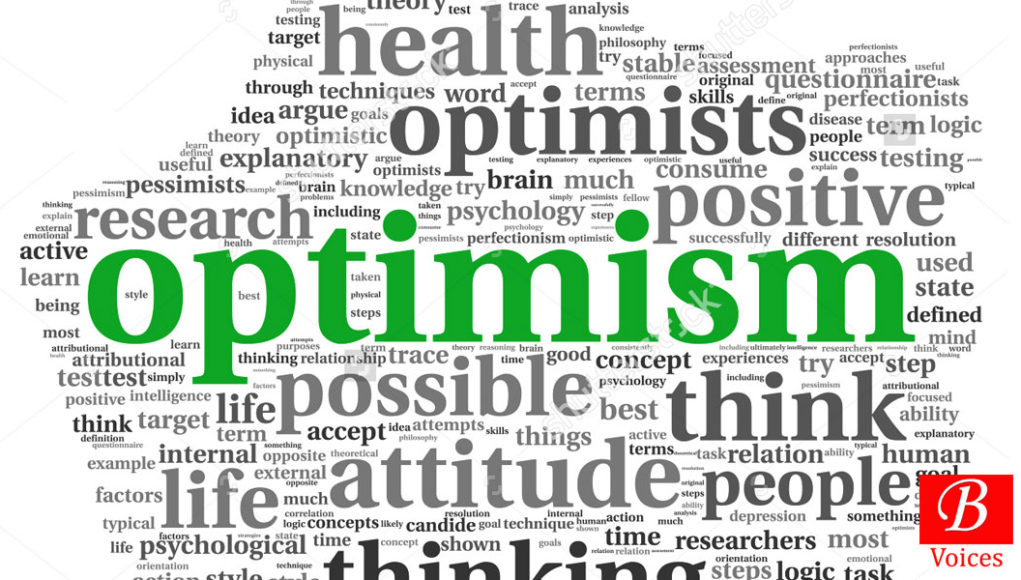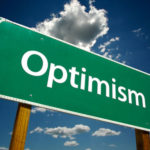Mehwish Qudoos Alizai
Let’s think back to the last time when we experienced some loss, hardship, or obstruction in life. What was our response to that? We reacted through expelling, contemplating, and aboding over the disappointment, or we looked for a feeble vivid of meaning through all of the darkness? How swiftly we bounced back and how resilient we are?
The missing point with the conception of ‘the glass: half empty or half full’ is that the glass is refillable. There is always something good in something bad and always something bad in good. There is unremittingly some perfection in the imperfection and vice versa.
Why don’t we think that the training in optimism is equally important as the training in calculus and motion? What drives people to give their best in terms of what they offer us? And what makes people more resilient? Such questions are decisive to determine our standpoint of life.
The missing point with the conception of ‘the glass: half empty or half full’ is that the glass is refillable
Paradoxically, German philosopher Gottfried Wilhelm Leibniz (1646-1716), one of the inventors of calculus is also known for his ‘philosophy of optimism’. He was believed to be an ingrained optimist, affirming that we live “in the best of all possible worlds”. The term ‘optimism’ embraces two closely interrelated ideas: the first is the predilection to hope, while the second more commonly denotes the tendency to believe that we live in “the best of all possible worlds”, as conceived by Gottfried Wilhelm Leibniz in his prominent theodicy.
Churchill once said ‘a pessimist sees the difficulty in every opportunity; an optimist sees the opportunity in every difficulty.’ Certainly, life and its happenings will not always be great and we all go through some hard days and stressful periods in life. Sometimes, lack of enthusiasm and hope may surround us too. Nonetheless spotting some silver lining is not an easy task, there are always some upright things in this world, and it’s worth fighting for. Likewise, happiness gives the genuine sense when one experiences the woe or pain. One cannot enjoy the life and light of the day by avoiding the night and its darkness. This is called life. The fact is that self-actualization, mindfulness and optimism may get us through the rough patches and ups and downs of life.
Nelson Mandela asserting in his autobiography, “I am fundamentally an optimistic. I cannot say, whether it comes from nature or nurture. Part of being optimistic is keeping one’s head pointed towards the sun, and one’s feet moving forward. There were many dark moments when my faith in humanity was sorely tested, but I would not and could not give myself up to despair. That way lays defeat and death.”
Optimism is the best choice since no better option can replace positivity. The pessimism has got no benefit over the optimism ever since it cannot achieve much. Optimism supports us to see new opportunities, learn from different situations, and keep going forward. Movement and growth are indispensable for life, which only an optimistic approach can lead us to attain.
A pessimist sees the difficulty in every opportunity; an optimist sees the opportunity in every difficulty – Winston Churchill
Studies are evident that people with a positive attitude have better relationships, enjoy mental and physical well-being and live longer. Dr. George E. Vaillant, Professor of Psychiatry at Harvard Medical School, in The Wisdom of the Ego, writes about individuals who have “both the capacity to be bent without breaking and the capacity, once bent, to spring back”. Vaillant proclaims that, adding to the external cradles of resilience (such as biological well-being or social supports); these folks have significant internal sources which include a healthy self-confidence and optimism. Vaillant reaffirms this in his later book, Aging Well: Surprising Guideposts to a Happier Life; a compendium of three studies encompassing over 800 folks, men and women, rich and poor, who were pragmatically observed for more than five decades, (from young to the old age). It endorses that one of the most powerful predictors of successful aging is regularly using mature coping mechanisms or resistances. Three of them are: Altruism or Unselfishness (doing for others what they need, not what we want to do for them); Sublimation or Redirection (diverting energy to more productive pursuits such as creativity, art, sports); Suppression or Overpowering (postponement of stressors, not repression). This means not working in a pessimistic crisis mode but preparing and adapting for whatever life brings.
The moon stays bright when it doesn’t avoid the night – Rumi
Optimism; the researchers concluded, tear open the effects of a traumatic negative experience. Far from being delusional or faith-based, upholding a positive outlook in tough situations is not only an imperative predictor of resilience but it is the most important predictor of it. People who hold a winning attitude are resistant, motivated and tend to be more positive compared to less-resilient individuals and vice versa. They are better able to control their feelings and to maintain their optimism through the most tiresome circumstances. Optimism; an endless positive attitude is the whole thing indeed. Having an unshakable attitude is not only healthy and beneficial for the beholder but also for others. Because this is something contagious, consequently it will spread positive vibes around. Furthermore, continued optimism and mindfulness brings your mind and heart in peace and peace is always beautiful. Colin Powell sees ‘Perpetual optimism as a force multiplier’.
Writer is an Assistant Professor of Sociology in Balochistan University of Information Technology, Engineering and Management Sciences (BUITEMS), Quetta.
Share your comments!










